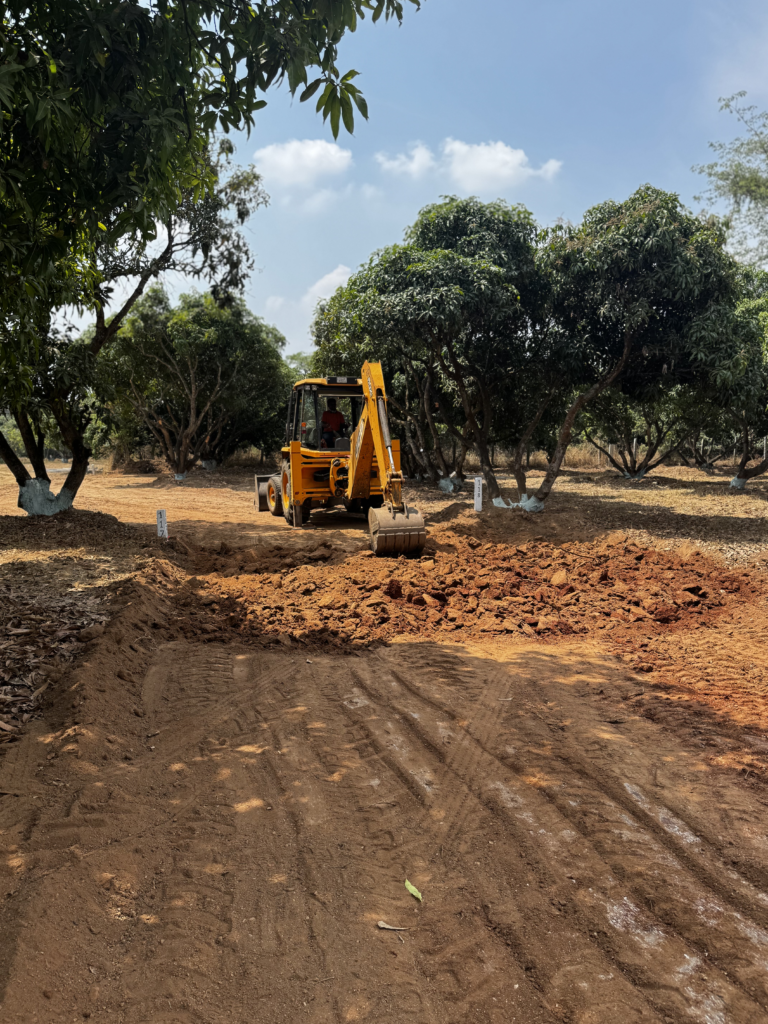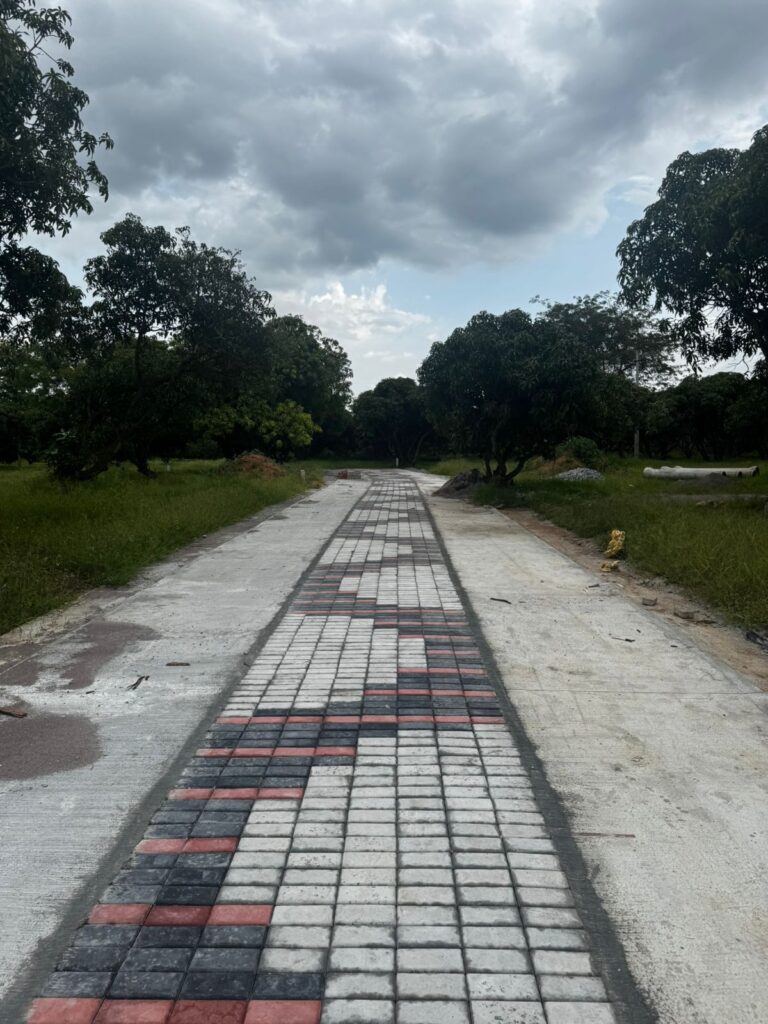1. Introduction: A Road Inspired by Nature
When the team at Hosachiguru Mamara Farms reached out to us, their vision immediately struck a chord. They weren’t looking for the usual—no concrete-heavy roads or harsh, rigid infrastructure. What they wanted was something far more thoughtful: roads that blended into the earth, as if they had always belonged there. Functional, yes. But also elegant. Strong, yet deeply respectful of nature.
This wasn’t just another road project—it was an invitation to co-create with the land. A chance to prove that infrastructure can be both high-performing and harmonious with its environment.

2. The Site Challenge: High Plasticity Soil
The farm’s terrain had a high plasticity index. In traditional road engineering, such soil is deemed unsuitable for road construction due to its tendency to swell, shrink, and crack.
The usual approach? Excavate and replace with engineered fill.
Our approach? Stabilize what’s already there.

3.EcoPath’s Solution: Bio-Enzyme Soil Stabilisation
3.1 Understanding Bio-Enzymes
We opted for bio-enzyme-based soil stabilisation. This method uses natural, eco-friendly additives that react with the soil to reduce plasticity and increase load-bearing capacity without disrupting its ecosystem.
Key Benefits:
- No cement, lime, or harmful chemicals
- Preserves local soil
- Reduces water absorption and shrink-swell behaviour
- Long-lasting sub-grade performance
3.2 Mix Design
The existing soil was reinforced using 30% aggregates to aid interlock and increase density. The process was designed to maximize local resources and minimize environmental impact.

4.Construction Process: Step-by-Step Execution
4.1 Step 1: Soil Scarification
The topsoil was scarified using graders to loosen the compacted layer.
4.2 Step 2: Bio-Enzyme Application
A measured amount of bio-enzyme solution was sprayed evenly over the scarified surface.
4.3 Step 3: Mixing and Blending
The enzyme solution was mixed thoroughly using rotary mixers and tractors, ensuring uniform
penetration.
4.4 Step 4: Aggregate Reinforcement
30% coarse aggregates were blended into the treated soil to enhance strength.
4.5 Step 5: Compaction
High-tonnage rollers were used to compact the mixture to achieve optimal density and moisture
content.
4.6 Step 6: Curing
The stabilised base was left to cure over several days, ensuring full bonding and strength gain.
5.Surface Treatment: Cement-Free Paver Blocks
The final road finish was as thoughtful as its foundation:
● Central Strip: Paved with 100% cement-free paver blocks, made from industrial waste and GGBS.
● Side Bands (0.85m on each side): Cast in concrete to provide strength, water diversion, and neat edges.
This hybrid design not only added to the aesthetic appeal but also minimised the road’s overall carbon footprint.

6.Technical Summary
Unlike traditional methods that rely on RCC with steel rebars and cement-based pavers, our approach at Mamara Farm took a greener route. The base was constructed using stabilised native soil mixed with bio-enzymes and aggregates. The surface was laid with GGBS-based cement-free paver blocks manufactured entirely from industrial waste. These pavers were not
only visually seamless with the natural surroundings but also significantly reduced carbon emissions. Concrete was used minimally and only where necessary, ensuring a high-performance yet eco-conscious build.
7.Key Outcomes
● Zero soil import
● No cement in pavers
● Minimal concrete usage
● Low maintenance and high durability
● Up to 60% lower carbon emissions
● Visually aesthetic and farm-friendly roads
8.Final Thoughts
At EcoPath, we believe in building infrastructure that listens to the land. At Hosachiguru Mamara Farms, we showed that it’s possible to construct roads that are strong, sustainable, and sensitive to the environment they exist in.Because when roads breathe with the land, they last longer and look better.

Leave a Reply to A WordPress Commenter Cancel reply